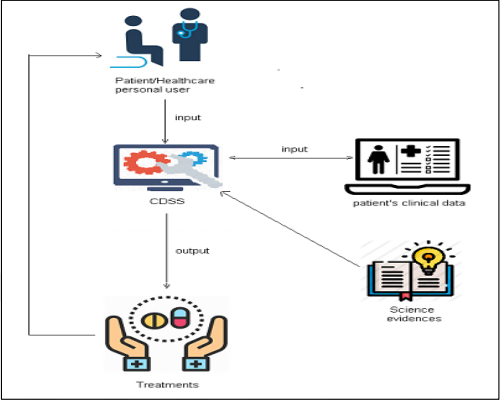Style Sampler
Layout Style
Search News Posts
Genel Sorular 850-244-11-22
•
Destek 850-244-11-22
klİnİk karar destek sİstemlerİ
Clinic Decision Support System (CDSS) is a category of health information systems designed to improve clinical decision making in healthcare. At the current point for the health system, Klink Support Systems play the role of supporting the physician.
There are different techniques and tools for Big Data analytics in healthcare field, the analytics of data support the clinical decision by providing information that healthcare personnel can use to improve treatment and deliver the best care. CDSS are providing healthcare individuals with knowledge, this knowledge needs to be perfect, for that it is very important to understand the data collected in the healthcare field, and that can only be realised by using efficient tools
Decision support systems entered the literature in the 1960s. Since then, they have gained an increased importance with the development of technology and internet. These systems have facilitated the decision-making processes of managers in many areas ranging from education, health, finance to defense. Today, they have become much more capable thanks to the dramatic increase in digital data and artificial learning technologies. One of the areas where human mistake is irreversible and costly is the health sector.
In Todays Healhcare Systems, many patients address laboratory services directly without a doctor's referral. This causes the problem of interpretation of laboratory test results by the patients who don’t havea proper medical background .So the patients require that the laboratory services provide not only the results of the tests but also their interpretations. anaplatform Automated decision support systems have proved their efficiency for doctors can be a good solution for this problem.The experience of development and implementation of decision support systems for doctors [7-10]showsthe efficiency of such solutions for the doctors,however, developers face problems when it comes to the decision support for patients. They require different approach in data presentation and interpretation.
The challenge is to use a suitable Data integration service that will allow the combination of data collected from various sources and provide one unified service to the users, that is dataPlatform.

The goal of this service is to provide of a decision support system for the patients of a laboratory service. To achieve this goal we have developed a decision support system that solves a classification problem and defines the following parameters based on the results of laboratory tests:
Our developed decision support system has two main use cases: knowledge acquisition and decision support. Knowledge acquisition mode allows defining inference rules, which are complex objects and each of them addsits element to the resulting inference.The knowledge is defined by associatingtest resultsand its reference value to a set of diagnosis[17]. In the decision support mode,the system generates recommendations applying a set of knowledge and rules to the facts that are derived form a LIS data base.

Consists of three basic components: A knowledge base, inferences rules and communication mechanism. It is based on IF-Then logic (IF medicine A is taken, and medicine B is taken too, THEN the user will get an alert).
This a system that does not have a knowledge base, instead it is based on AI, which means that the computer machine learns from prior experiences to detect patterns in clinical Data.
Data visualization is considered as the most efficient way to improve the process of data, it is based on the use of the skills that human possesses to aid in the deal with complex and massive data. Data visualization allows the illustration of data’s relations using images and graphs, which means a well understanding of information. Since the data is raising with accelerated pace, it is very important to use tools that facilitate the management of data to obtain the valued and needed information.
Hospitals data, patient records, insurance data, and other types of data are immersing today's healthcare organizations. There are various tools to analyse the huge amount of data and improve the healthcare field performance. Visual analytics is considered as one of the most efficient tools that ameliorate the understanding of data and help in decision making.
A common problem in outpatient practices is absenteeism and late cancellations. As a result: